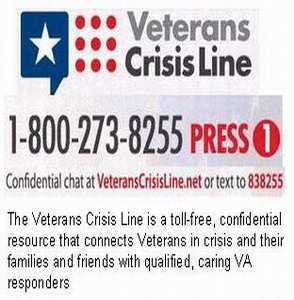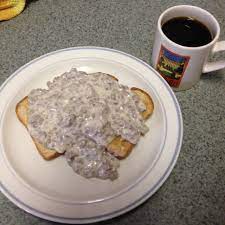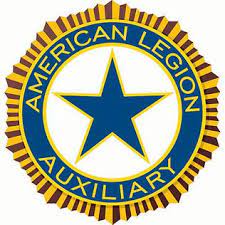Why is the casket of a veteran or active military serviceperson covered with an American flag? When did “Taps” become a regular part of a veteran’s memorial service? What’s the significance of the 21-gun salute and the 13 precise folds of the American flag during a military funeral?
Covering the Casket with a Flag
Covering the casket with the flag became a custom during the Napoleanic wars (1796-1815). The dead carried from the field of battle on a caisson were covered with a flag, so that each side could identify their own dead. Draping the flag of a nation over a military service person’s or veteran’s casket serves to remind the living of that person’s service and sacrifice for that country.
The 21-Gun Salute
The 21-gun salute – seven guns shot three times – came from a signal to stop fighting to allow each side to clear the dead from the field of battle. Once each army had cleared its dead, it would fire three volleys to indicate that the dead had been cared for and that they were ready to go back to fighting.
In the earliest days of cannon and firearm use, the British National Salute was recognized as being comprised of seven guns. Although a ship could fire seven guns for honors, fort-based guns could fire three shots to one shot afloat. In that day, gunpowder of sodium nitrate was easier to keep on shore than at sea.
Over time, as the quality of gunpowder improved by the use of potassium nitrate, the sea salute was made equal to the shore salute.
A 21-gun salute was the highest national honor. Although for a period of time monarchies received more guns than republics, eventually republics claimed equality. The United States adopted the 21-gun and “Gun for Gun Return” on August 17, 1875.
Any honorably discharged service member can get a 21-gun salute. In some states, the honor may be assigned to a veteran’s service organization, rather than an active military funeral service team.
A Short History of Taps
Taps is an American bugle call, composed during the Civil War by Union Brigadier General Daniel Butterfield at Harrison’s Landing, Virginia, in 1862. The call, and the name Taps, was officially adopted by the U.S. Army in 1874.
The 24-note melancholy bugle call is thought to be a revision of a French bugle signal, called “tattoo,” that notified soldiers to cease an evening’s drinking and return to their garrisons. It was sounded an hour before the final bugle call to end the day by extinguishing fires and lights.
The first time Taps was played at a military funeral may also have been in Virginia soon after Butterfield composed it. Union Capt. John Tidball, head of an artillery battery, ordered it played for the burial of a cannoneer killed in action. Not wanting to reveal the battery’s position in the woods to the enemy nearby, Tidball substituted Taps for the traditional three rifle volleys fired over the grave.
Taps was played at the funeral of Confederate Gen. Stonewall Jackson 10 months after it was composed. Army infantry regulations by 1891 required taps to be played at military funeral ceremonies. Taps now is played by the military at burial and memorial services, to accompany the lowering of the flag and to signal the “lights out” command at day’s end. (Source: U.S. Department of Veterans Affairs)
The Flag Folding Ceremony
It takes 13 individual folding movements to create the blue field/white star triangle encasing the American flag. Two people conduct the ceremony, with precision and solemn attention.
If there is no body in a casket, such as at a memorial service where the deceased has been cremated, the flag may be unfolded and re-folded with just as much solemn attention.
As the folding takes place, the celebrant or funeral director may read “How Many Folds are Done with a Military Flag?” Jim Hammond always carries 25 copies with him, as often, the family wants to take copies of this reading home after the funeral.
- The 1st fold of our flag is a symbol of life.
- The 2nd fold is a symbol of our belief in eternal life.
- The 3rd fold is made in honor and remembrance of the veterans departing our ranks who gave a portion of their lives for the defense of our country to attain peace throughout the world.
- The 4th fold represents our weaker nature, for as American citizens trusting in God, it is to Him we turn in times of peace as well as in time of war for His divine guidance.
- The 5th fold is a tribute to our country, for in the words of Stephen Decatur, “Our Country,” in dealing with other countries, may she always be right; but it is still our country right or wrong.
- The 6th fold is for where our hearts lie. It is with our heart that “We pledge allegiance to the flag of the United States of America, and to the republic for which it stands, one Nation under God, Indivisible, with Liberty and Justice for all.”
- The 7th fold is a tribute to our Armed Forces, for it is through the Armed Forces that we protect our country and our flag against all her enemies, whether they be found within or without the boundaries of our republic.
- The 8th fold is a tribute to the one who entered into the valley of the shadow of death, that we might see the light of day.
- The 9th fold is a tribute to womanhood, and Mothers. For it has been through their faith, their love, loyalty and devotion that the character of the men and women who have made this country great has been molded.
- The 10th fold is a tribute to the father, for he, too, has given his sons and daughters for defense of our country since they were first born.
- The 11th fold represents the lower portion of the seal of King David and King Solomon and glorifies in the Hebrews’ eyes, the God of Abraham, Isaac and Jacob.
- The 12th fold represents an emblem of eternity and glorifies, in the Christians’ eyes, God the Father, the Son, and Holy Spirit.
- The 13th fold, or when the flag is completely folded, the stars are uppermost reminding us of our nation’s motto, “In God We Trust.”
Folding Tip: When folding the flag in half lengthwise, leave an inch on the blue field side overlapped so you don’t have to refold, then a second lengthwise fold. You’ll know your triangle folding is good if there’s a corner at the edge of the blue field. When completed, the blue star field completely encloses the flag.
Flag Presentation to the Family
What members of each service branch say to the family upon presentation of the flag differs by service.
Army: “As a representative of the United States Army, it is my high privilege to present you this flag. Let it be a symbol of the grateful appreciation this nation feels for the distinguished service rendered to our country and our flag by your loved one.”
Navy: “On behalf of the president of the United States and the Chief of Naval Operations, please accept this flag as a symbol of our appreciation for your loved one’s service to this country and a grateful Navy.”
Marine Corps: “On behalf of the president of the United States, the Commandant of the Marine Corps, and a grateful nation, please accept this flag as a symbol of our appreciation for your loved one’s service to country and Corps.”
Air Force: “On behalf of the president of the United States, the Department of the Air Force, and a grateful nation, we offer this flag for the faithful and dedicated service of (service member’s rank and name).”
Coast Guard: “On behalf of the president of the United States, the Commandant of the Coast Guard, and a grateful nation, please accept this flag as a symbol of our appreciation for your loved one’s service to country and the Coast Guard.”
If the next of kin has expressed a religious preference or belief, all branches may add, “God bless you and this family, and God bless the United States of America.”







